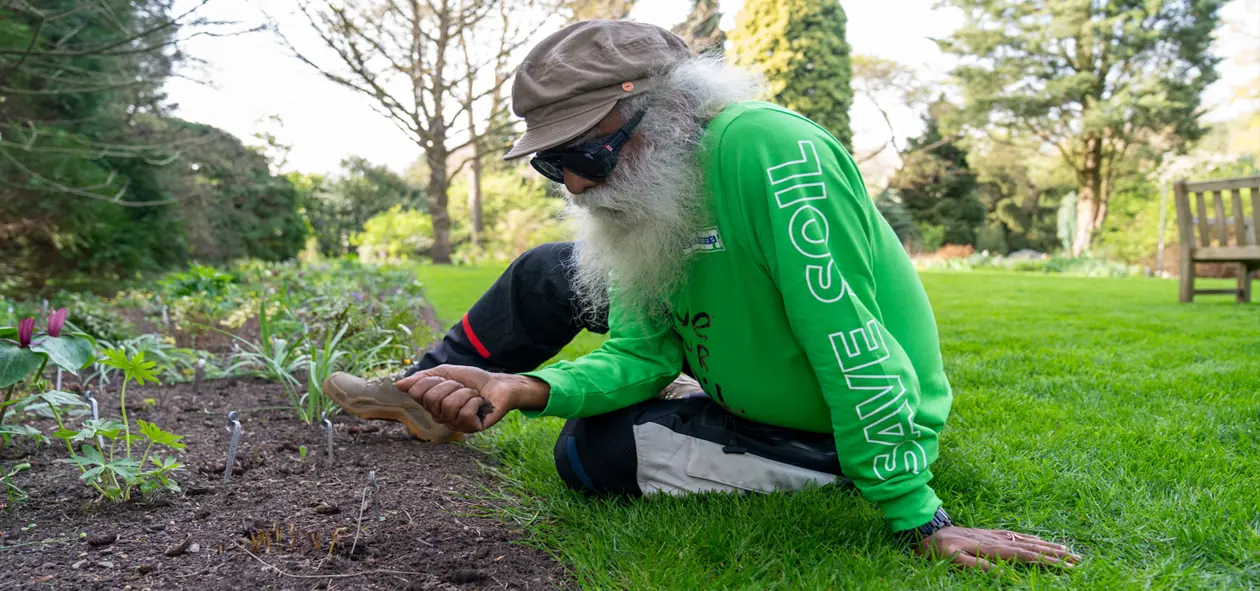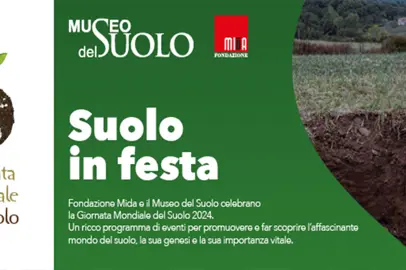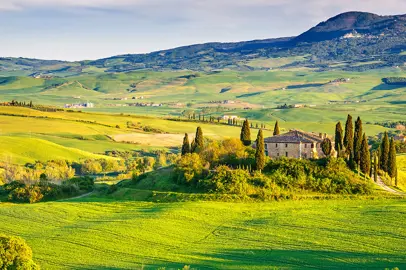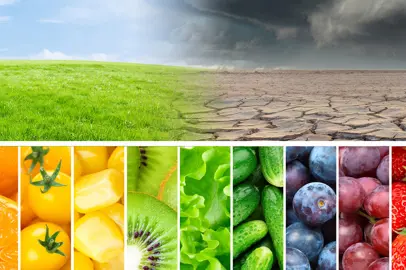15 November 2023
The causes and effects of soil degradation
Sadhguru reveals the underlying causes of soil degradation and outlines the four negative effects it can have on the planet's ecology
Soil degradation is the most urgent ecological challenge of our time, and Sadhguru, the founder of the Conscious Planet Movement - Save the Soil, argues that the fundamental causes of soil degradation are two and result in four serious effects that jeopardize human survival on the planet.

Sadhguru Photo: Copyright © Ufficio Stampa Conscious Planet Salva il Suolo
The two main causes of soil degradation are
1. Industrialization of agriculture
Since we started highly mechanized and industrialized agriculture, the organic content in the world's soil has significantly decreased. For soil to be potent agriculturally, it must have a minimum organic content ranging from 3 to 6%, but in many parts of the world, it is well below 1%. Sixty-two percent of Indian soil has less than 0.5% organic content.
Why did this happen?
When we harvest a ton of crops, it means we have removed a ton of soil.
What are the means to restore it?
We used to naturally replenish it when there were animals and trees on the farm because the green litter from trees and animal waste are the only ways to restore organic content in the soil. People think a tractor will do the job. A tractor will plow the soil but won't enrich it as animals and trees would.
2. Meat consumption and livestock grazing
Currently, fifty-one million square kilometers of land are cultivated worldwide. Of these, forty million square kilometers are used for animal farming and their feed, accounting for 75%. If meat consumption were reduced by 50%, twenty million square kilometers of land would be available for soil regeneration. We can regenerate that land within eight to ten years.
Video Copyright © Conscious Planet Save Soil
The 4 effects of soil degradation
1. Human health worsens
Indian soil conditions are so poor that nutrient levels are disastrously decreasing. Especially for Indian vegetables, their nutritional value has decreased by 30% in the last twenty-five years. Worldwide, doctors advise people to shift from a meat-based diet to a vegetarian one. But in India, doctors recommend people to shift to meat. While the world is making an effort to transition from meat consumption to a vegetarian lifestyle, in India, largely a vegetarian nation, people are trying to switch to meat because there isn't enough nutrition in the food they consume. This is simply because they haven't taken care of the soil. The micronutrient content in the soil has decreased so drastically that today, over seventy percent of Indian children under the age of three are anemic.
2. Soil organic matter decreases
Eighty-seven percent of the planet's life, including humans, a multitude of microbes, worms, birds, animals, and trees, lives on about 39 inches of soil. This is the average soil depth on the planet. But the degradation that has occurred in the last 70 years is alarming. The amount of biomass in the soil has decreased by about 80% in the last 50 years. This is truly the death of life. If we continue like this, it is predicted that by the end of this century, 80% of the life of insects and worms will have disappeared.
If all insects die, all life on this planet will end in a few years. If all worms die, there are only a few months before everything ends. If all microbes die today, everything will end tomorrow. What keeps us alive is microbial life at all levels. The organic content in the soil is decreasing at an alarming rate because we have a very specific sense of the planet. If this soil is to be rich, it needs organic material that can only be obtained from animal waste and green waste from trees.
If all humans were to disappear tomorrow, in ten years, the planet will become ecologically super-rich. Humans, who should be the most evolved creatures on this planet, have become the most deadly problem for this planet. It's not that the planet is in danger. The planet will survive. The fact is that it will become inhospitable for human life.
3. Causes a vicious cycle of floods and droughts
In India, if you look back over the past few years, wherever a flood occurred, a drought occurred within three months. This is because the only water source in India is from monsoons. In India, rivers, lakes, ponds, and wells are not water sources. They are just destinations for rainwater. Only 4% of Indian river water is glacial, the rest is all monsoon water.
In the last hundred years, the volume of water that comes as monsoons has not changed. It's just that fifty years ago, monsoons lasted from 70 to 140 days. Now they last between 40 and 75 days. This means that the downpours are stronger.
When rainwater falls on the ground, it should percolate into the soil and go into groundwater; but since all the trees have been removed, it runs off on the surface, eroding the soil and creating a flood. This is happening simply because it's all open ground. There are no trees. There isn't enough organic activity in the soil to absorb the water. If the water were filtered down, wells, ponds, and rivers would have water. Since rainwater is not retained, after some time, a drought is likely to occur.
Soil is the planet's largest dam. If it's in the right condition, soil can hold 800% more water than all rivers combined. But as the organic value of the soil decreases, its ability to retain water also decreases.
4. Food shortage can cause civil conflicts
India has about 160 million hectares of arable land, but almost forty percent of this soil is classified as problematic. This means that in another twenty-five or thirty years, it may not be able to grow the food this nation needs. When there is no water and food, the level of civil war that will occur will devastate the nation in many different ways. People from rural areas where water completely runs out will migrate in large numbers to urban centers. This is not far away. Without infrastructure, they will remain on the streets, but for how long? When there is no food or water, they will break into homes. And according to Sadhguru, who is not a doomsday prophet, in the next eight to ten years, we may see these situations unless something drastic is done now.
Edited by editorial staff, Avion Tourism Magazine
Text source video and photos: Copyright © Conscious Planet Save Soil Press
Visual: Copyright © Sisterscom.com / Depositphotos
|
Conscious Planet Save the Soil is the movement, and each one of us can become an active part by staying informed, promoting the movement, participating in events, and raising awareness among politicians. Learn more about the movement and how to become an Earth Buddy.
|
You might be interested in
Sustainability

Save Soil
The Soil Museum in the province of Salerno
The only museum in Italy, on the occasion of World Soil Day it presents conferences, meetings, visits and free workshops to discover its genesis and vital importance
Sustainability

Save Soil
Restoring soil health: the key to a more sustainable Italy and climate
Experts at COP29 highlight the urgency of regenerating soils to combat climate change and ensure environmental and food security
Sustainability

Save Soil
Close link between soil quality and human health
Save the Soil movement calls for urgent policy action to address soil degradation and promote physical and mental well-being globally


